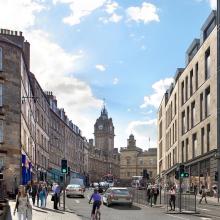
Locals reacted with scepticism, alarm and irritation to a briefing on why Leith Street will be closed for 44 weeks from September and how temporary diversions will cope (see Breaking news, 28.2.17.)
The occasion was a meeting of the New Town & Broughton Community Council (NTBCC).
Donald Anderson (Head of PR consultancy PPS Edinburgh, handling communications for St James Quarter developer TH Real Estate) introduced Martin Whitton from principal contractor Laing O’Rourke (LO), and Neil Heggie, a transport consultant from SWECO.

Anderson began by describing the presentation as part of a wider ‘stakeholder engagement process’ with the public. He was listening to what people had to say, and those comments would accompany (but not form part of) City of Edinburgh Council officials’ report to the Transport & Environment Committee on 21 March.
NTBCC members immediately challenged him on why this process had occurred so late, leaving little over a week for them to respond. This was not genuine consultation, this was communication from the top down, they protested.
Anderson (a former Leader of Edinburgh Council) did not contest that point strongly, but said that he had been unable to act until CEC gave clearance two weeks ago.
Political logjam
Two weeks ago was, readers will note, the point at which Spurtle rattled cages by approaching TH Real Estate and the Council for clarity on the extent and timing of the Leith Street closure. It appears that our enquiries, and the realisation of how soon the story would break, concentrated minds in City Chambers.
City Centre Councillor Joanna Mowat asserted last night that, up to that stage, CEC’s delays had resulted from serious disagreement between Labour and SNP Coalition partners over what would constitute an acceptable level of disruption caused by the roadworks. This was also a political problem, she stressed, not simply an engineering one.
Learning lessons from the past
The meeting moved on with a description of the proposed sequence of works: first along Leith Street (Waterloo Place to Calton Road), then in Picardy Place (creation of a three-sided gyratory), finally on Elder Street.
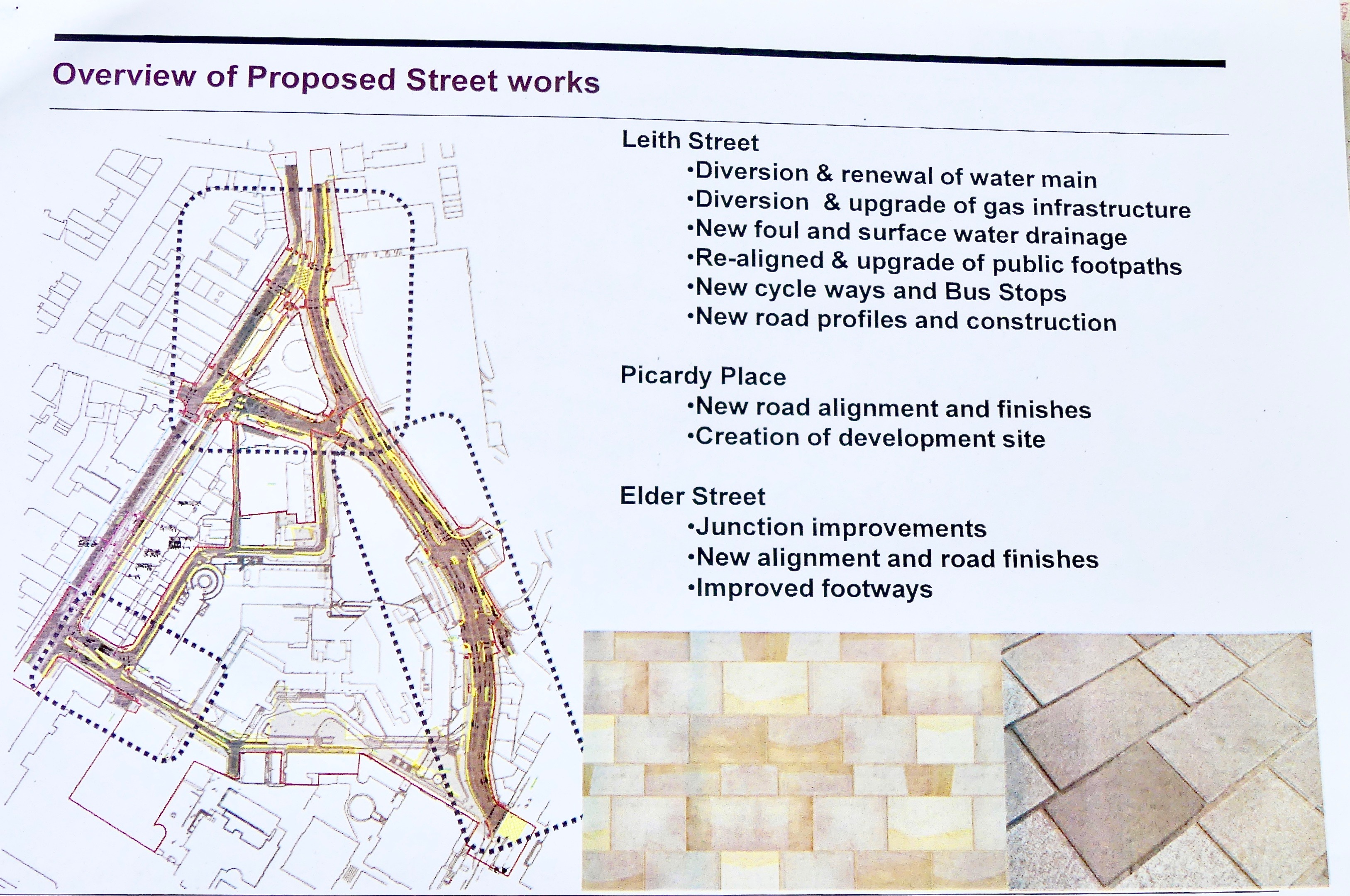
LO’s Martin Whitton said experience gained during tramworks showed that working strenuously to complete one closed section at a time was better than prolonging the agony with simultaneous and partial closures. Effort would be made to minimise an overlap between the end of work on Leith Street and the start of work on Picardy Place.
Under questioning from NTBCC’s Planning Convener Richard Price, Whitton revealed that contractors would work normal hours, 6 days a week. Various people in the room suggested 24-hour working on 7 days a week would complete the job sooner, and suggested the developers were more interested in saving money than reducing disruption.
Diversions
Proposed bus diversions are shown in Figure 1 below. Bus services not mentioned here will not be diverted. The main routes concerned are: London Road, Regent Road, the Bridges. Queen Street, Hanover Street.
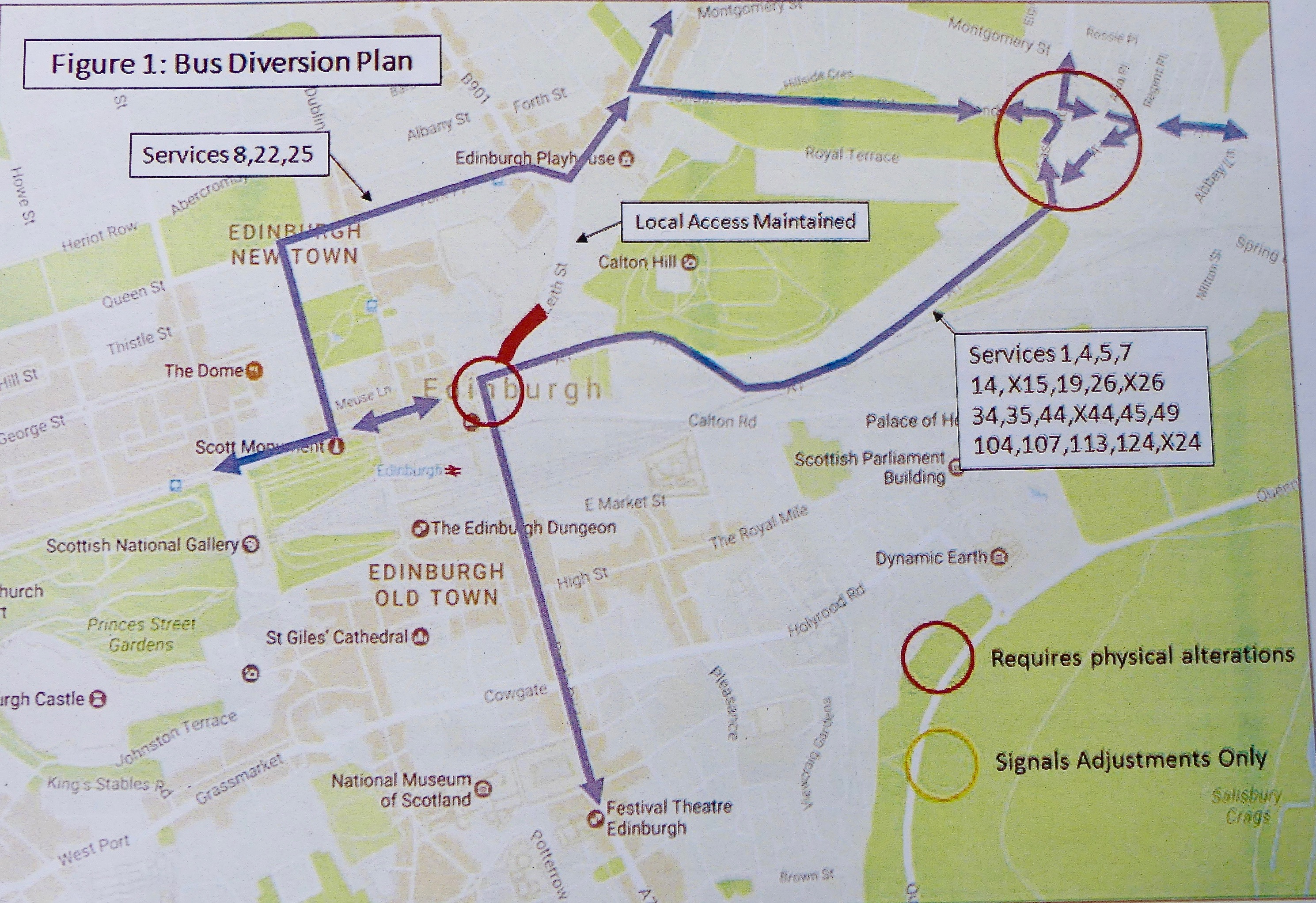
General traffic diversions appear below in Figure 2.
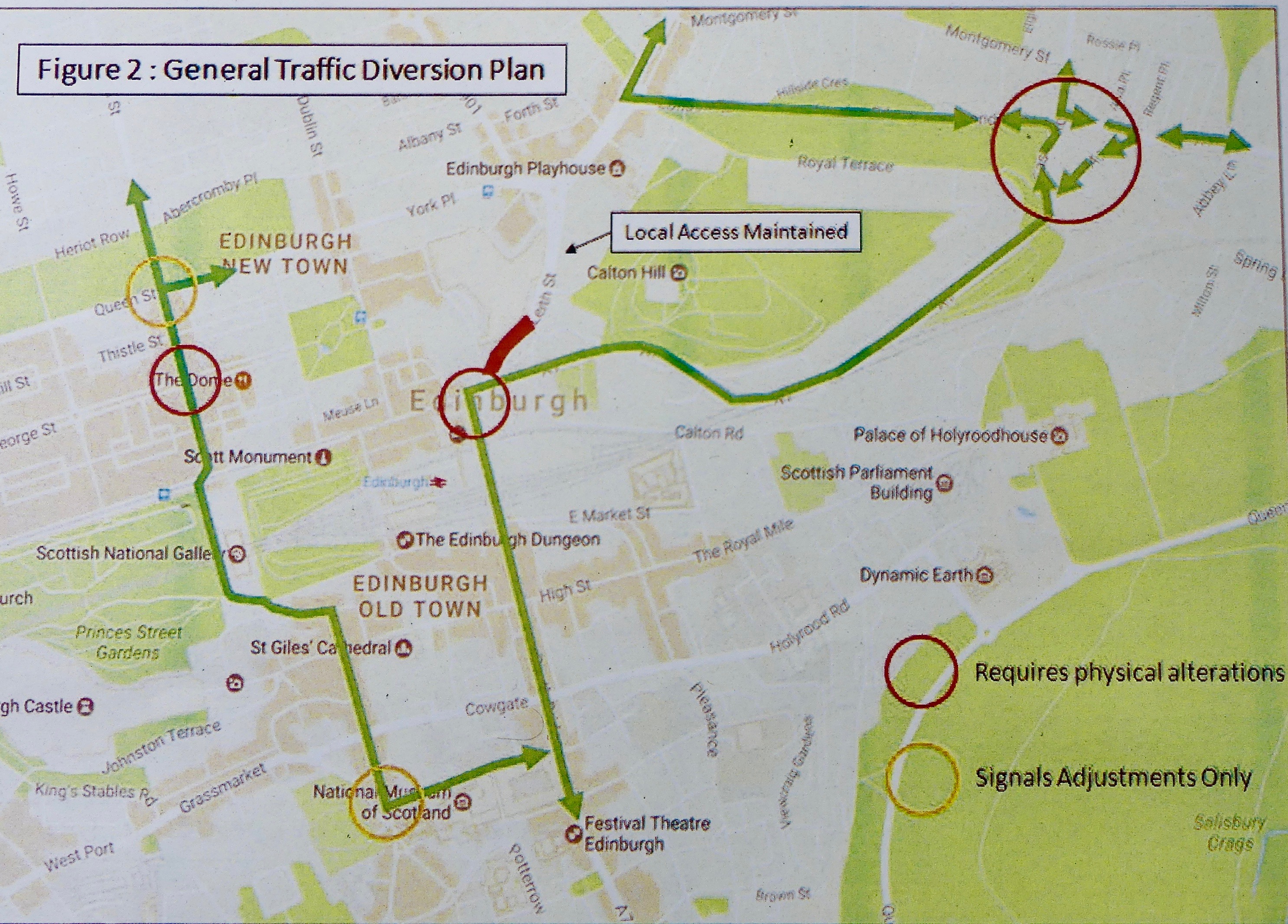
Carol Nimmo (Regent, Royal, Carlton Terraces & Mews Association) expressed dismay at the volume of traffic expected to use a time-consuming clockwise gyratory around London Road, Montrose Terrace and Easter Road.
Common sense would lead most drivers to avoid it by taking the Carlton Terrace Brae shortcut to Blenheim Place. Others expressed similar alarm that congested traffic would filter north along East London and London Streets, Drummond Place, Nelson and Albany Streets and Abercromby Place.
Observations and criticisms
It was suggested by various community councillors and members of the public that parking be suspended on all the main diversion routes, and that Park and Ride capacity be increased and incentivised for those commuting into the city. Claire Miller (Green candidate for the City Centre ward in May) sought assurances that the needs of pedestrians and cyclists would not be overlooked during the disruption. Heggie said they prioritised those groups, although Whitton could not promise special arrangements for cyclists at Easter Road.

Others cast doubt on CEC’s Transport Model technology, which was integral to the current response. It had, they insisted, failed to accurately predict displaced traffic flows through the New Town during tramworks.
Time-constraints brought an end to the question-and-answer session, during which Anderson and colleagues had gamely defended their technical response, but found no effective way to excuse what many present regarded as an informative but cosmetic exercise.
Anderson concluded with assurances that consultation would continue after the report went to Committee next week, and that diversions/signalling could of course be reassessed and tweaked later in the light of events on the ground.
A drop-in ‘information session’ covering the same issues will be held at Café Camino, 5.00–6.30pm on Thursday 16 March.
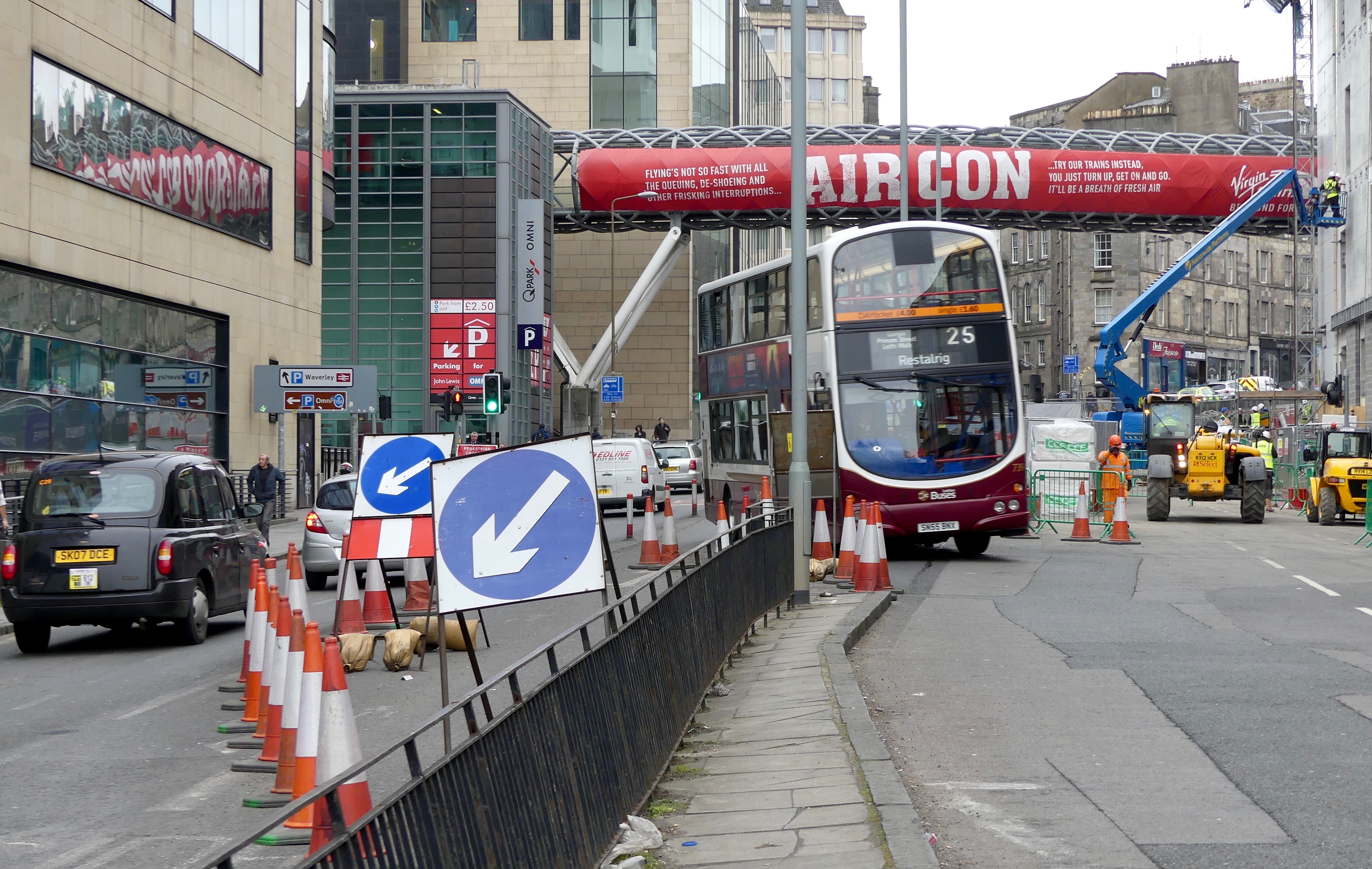
--------------
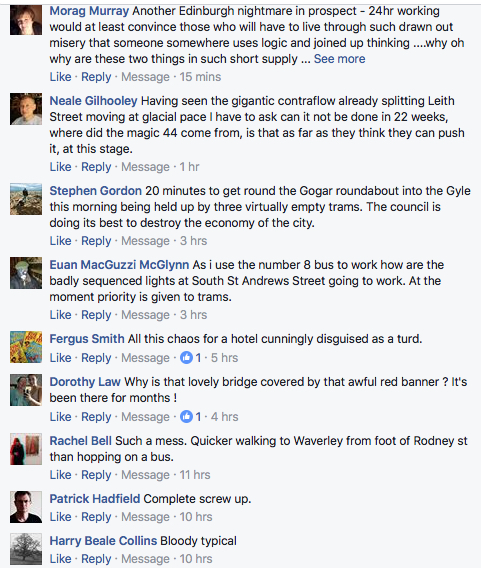
Email from City Centre Councillor Joanna Mowat (16.3.17): I don’t think I stated that the delay was because of a disagreement between Labour and SNP coalition partners merely that part of the reason for this coming to residents so late was because of political discussions in the Chambers – but not whom these were between.